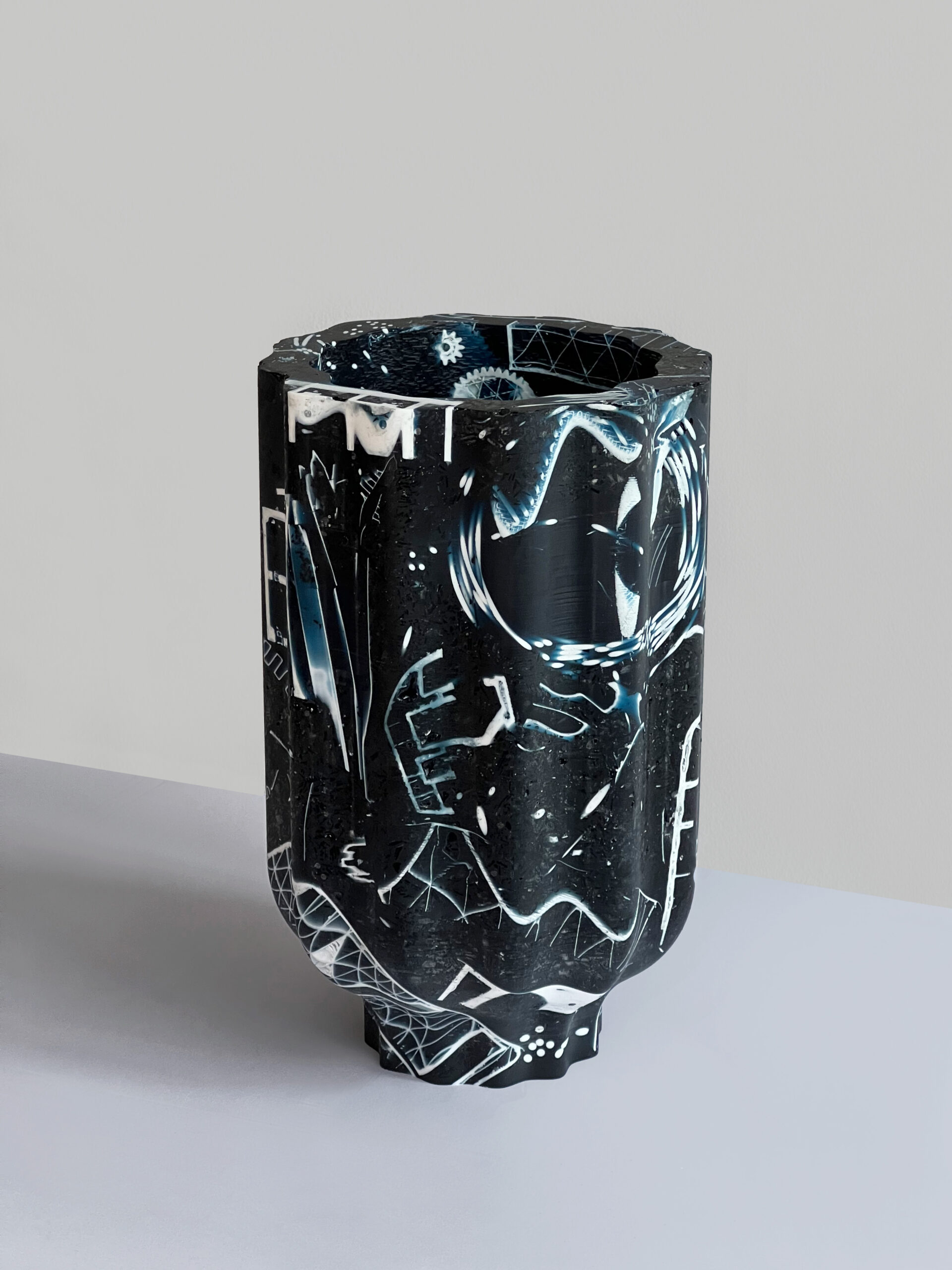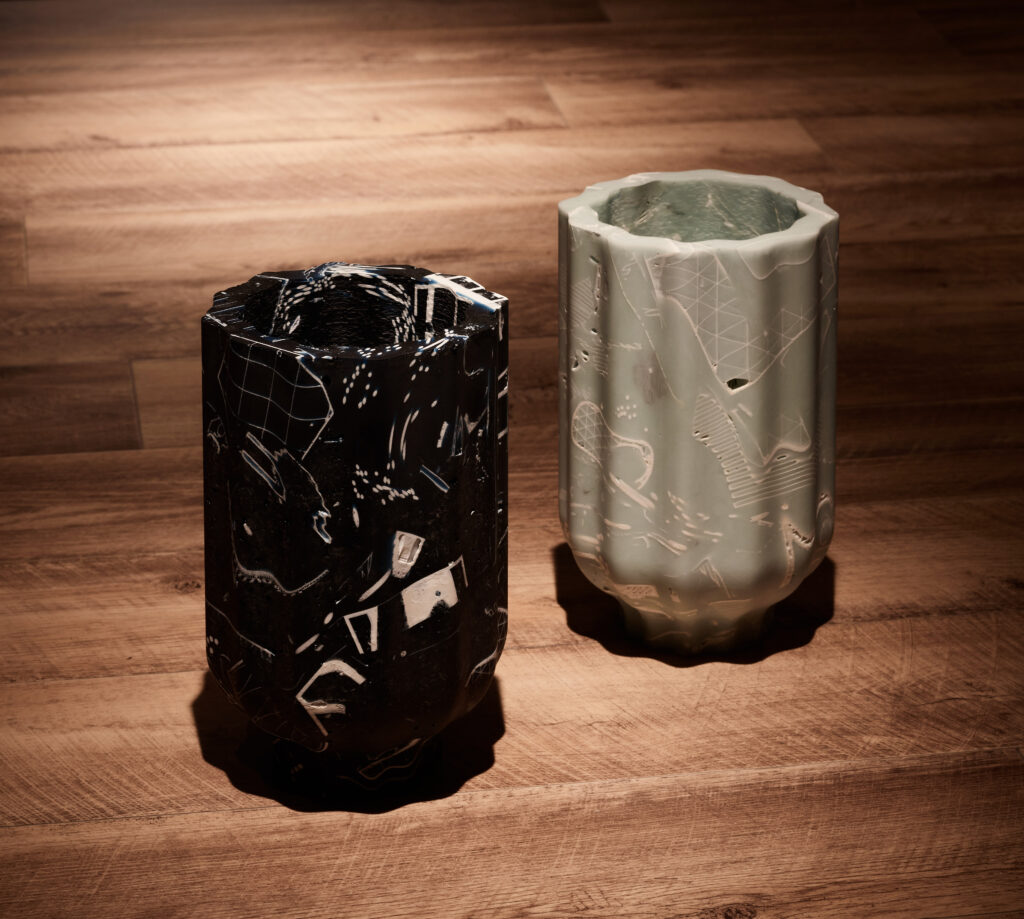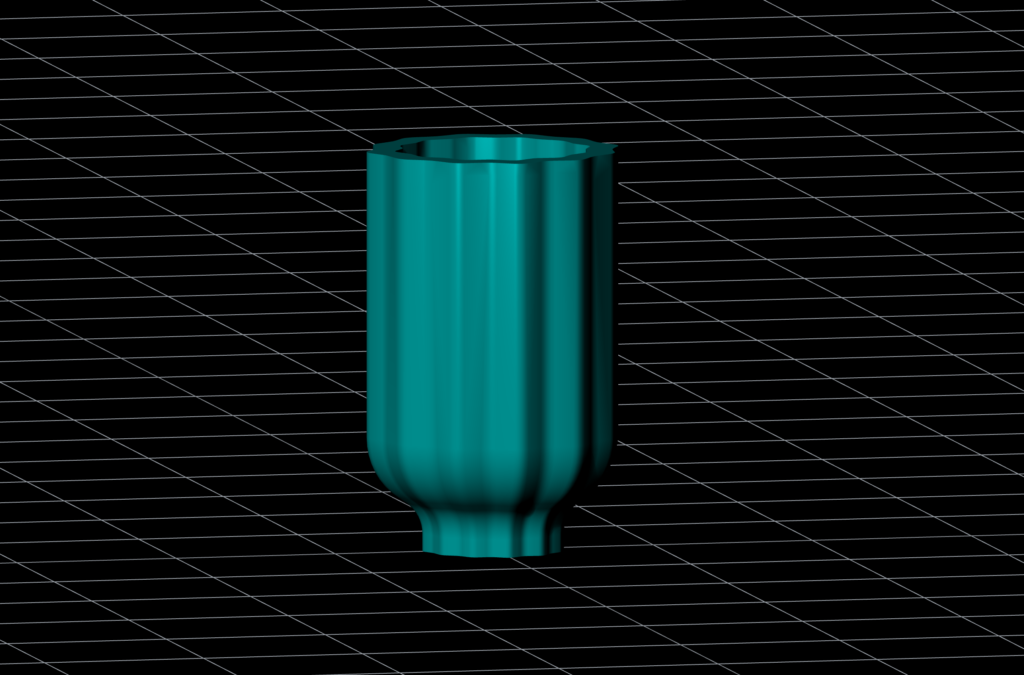Conglomerate Vases
A new collaborative work with Kyoko Hashimoto: ‘Conglomerate Vases’ first exhibited at A World We Don’t Want in 2021 curated by Friends & Associates for Melbourne Design Week, supported by the National Gallery of Victoria (NGV). I also wrote a catalogue essay (kindly labelled a manifesto by the curators) for the World We Don’t Want exhibition here.
In 2022 the vases were displayed again at the inaugural Melbourne Design Fair as part of NGV Select, curated by Simone LeAmon and Ewan McEoin of the NGV.
The vases are created from polylactic acid polymer waste collected from Sydney makerspaces. We bind the scrap into a roughly cubed shaped blank with an epoxy resin and them mill out the vase using a robotic mill.
Epoxy resin is not a good material actually, but in this case serves the rhetorical point of illustrating how makers, designers and industry, are bound within a tight set of material constraints comprising an unsustainable system. In other words, there was not an easily accessible replacement for the use of epoxy resin in this work, and we chose this poor material to highlight that even though it is unsustainable, it is nonetheless inexpensive, legal and (for the most part) culturally acceptable. How do sustainable choices compete against convenience? Not well.
In anycase, we collected the waste material from the floor of the robotic mill that shaped the vases and plan to use it in future vases. So for us the waste material became literal and figurative baggage that will carry around until we implement a cathartic reuse in a new design.
Single vase photos by us. Exhibition and detail photo by Kristoffer Paulsen.
Below is the exhibition text for the work.
In geology, a conglomerate is a kind of sedimentary rock containing particulate objects in a cementious binder, such as clay or silica. Such rocks are formal articulations of larger, unremitting processes of the earth; energetic forces that grind, melt, abrade and compress.
In business, a conglomerate is a kind of corporation made up of smaller independent, often unrelated, businesses that operate for the benefit of the conglomerate meta-structure.
Business conglomerates have formal articulations too. These vases articulate the conglomerate of industrial waste-making machines. They bind waste materials together in a way that is often praised by design media as a sustainable recycling practice. But the conglomeration is indiscriminate: the work ignores the assortment problem of waste and tacitly condones the generation of waste in the first place.
Why do we allow our materials to become so assorted that that easiest thing to thing to do with it is mash it up to create more stuff? This is the world we don’t want – a world in which the accelerationist agenda for new products views existing materials and products as nothing more than food for the machine.
The broader socio-technological conglomerates of waste-making machines is bound and cemented by regulatory policies that privilege capital expansion, economic growth and extravism; the processing and consumption of the earth. Within this framing, design practices are smaller particulate activities subsumed by conglomerate forces of production, operated not necessarily consciously or even willing, but pressured by a smothering need for survival in larger economic structure.




